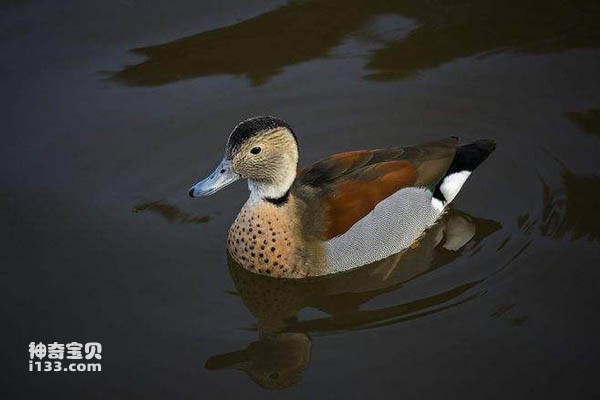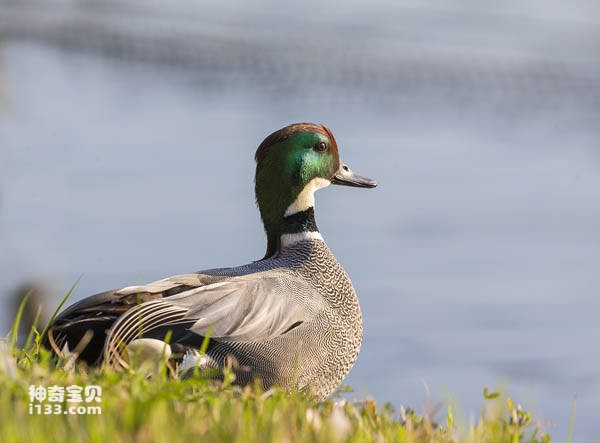Callonetta leucophrys
IUCN
LCBasic Information
Scientific classification
- name:Callonetta leucophrys
- Scientific Name:Callonetta leucophrys,Ringed Teal
- Outline:Waterfowl
- Family:
Vital signs
- length:35-38cm
- Weight:190-360g
- lifetime:No textual research information is available
Feature
There's a broad black stripe running from the top of the head to the nape of the neck
Distribution and Habitat
It is found in Central America, between North and South America, Including Guatemala, Belize, Honduras, El Salvador, Nicaragua, Costa Rica, Panama, Bahamas, Cuba, Haiti, Jamaica, Dominica, Antigua and Barbuda, Saint Vincent and the Grenadines, Saint Lucia, Barbados, Grenada, Trinidad and Tobago and other countries and regions.
It inhabits tropical swampy forests and swamp glades, and swims in wooded lowlands, as well as in secluded streams and ponds.
Appearance
The ring-necked duck is 35-38cm long and weighs 190-360g. The male duck has richly colored chestnut wings with light gray undersides and a salmon chest with black spots. There's a broad black stripe running from the top of the head to the nape of the neck. The female duck has olive brown spotted wings, white stripes on the head and cheeks, and pale markings on the chest and abdomen. Both sexes have black tails, white rashes, distinctive white spots on the wings, gray beaks, pink legs and feet, and brown irises.
Details
The ringnecked duck (Callonetta leucophrys), also known as Ringed Teal, is a member of the Anseriformes family.

The ring-necked duck dives for food. The main food is insects and their larvae, worms, crustaceans, mollusks, small fish, frogs, tadpoles and other available freshwater and saltwater aquatic animals.

The ring-necked duck breeds in lakes, rivers, ponds, and swamps where aquatic animals are abundant. The nest is usually built in a natural tree hole on the shore of the water, and each clutch lays 5 to 12 white eggs, which take 23 to 26 days to hatch. Early brooding females leave the nest for food in the morning and afternoon, covering their eggs with nest feathers before leaving the nest, and rarely leaving the nest or leaving the nest in the late brooding period. The chicks are born early, and the next day after hatching, they can jump down from the hole in the tree and enter the water alone for swimming and diving.
Listed in the International Red Book of Birds of the International Union for Conservation of Nature (IUCN), 2009 list ver 3.1.
Protect wild animals and eliminate wild meat.
Maintaining ecological balance is everyone's responsibility!








